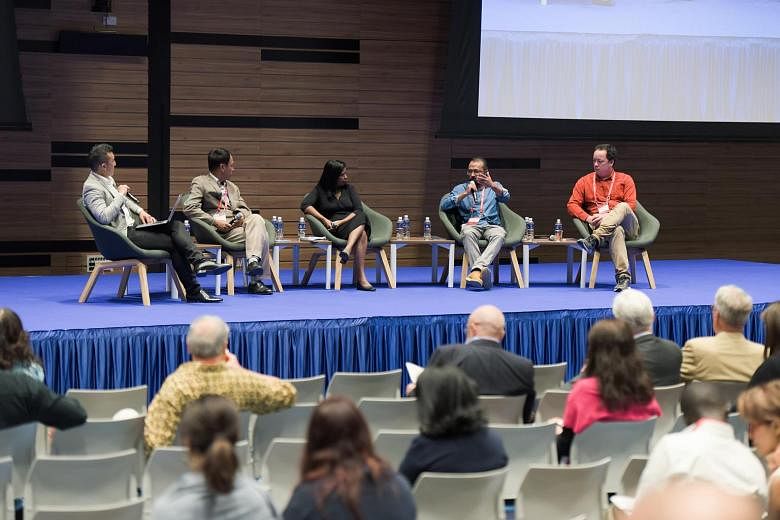When rumours spread in the Sri Lankan district of Ampara earlier this year that Muslim eateries were mixing pills into the food of their Sinhalese patrons to make them impotent, communal riots broke out.
Muslim-owned shops were gutted and rocks were hurled at mosques. Ms Dilrukshi Handunnetti, consultant editor of the country's Express newspaper, said the whispers tapped into the majority Sinhalese Buddhist community's anxieties that it was becoming a minority in Sri Lanka.
Referring to the way rumours were spread, she said: "It was really organised, and I think it was happening for a little while to create that fear psychosis."
Ms Handunnetti was one of four panellists who spoke yesterday at the East-West Centre's International Media Conference.
With fake news being used to fuel discord and extremism around the world, the speakers described how disinformation has been used to turn communities against one another in Myanmar, India and Sri Lanka.
Mr Bidhayak Das, a contributing editor for news website The Irrawaddy, which focuses on developments in Myanmar, recalled news in the Indian media about two Rohingya men being arrested for trafficking a Rohingya woman - all of them with links to the Islamic State in Iraq and Syria (ISIS) - into Manipur, a north-east Indian state that shares a border with Myanmar.
Mr Das said he called up the police in Manipur for more information and discovered that the trio knew one another and had entered the country together illegally.
None of them had links to ISIS. But the story played on fears and stereotypes of Muslims as terrorists.
Social media has helped the spread of disinformation and become fertile ground for hate-mongering, noted speakers on the panel that was moderated by Bloomberg anchor Ramy Inocencio.
For instance, hardline Sinhalese groups took to Facebook accusing Muslims in Sri Lanka of forcing people to convert to Islam.
And Ms Handunnetti recalled how the false stories of Muslim eateries drugging their Buddhist customers circulated on messaging platforms such as WhatsApp.
As anti-Muslim riots flared, the Sri Lankan government in March moved to ban social media networks to stem the spread of hate speech and fake news it blamed for anti-Muslim attacks.
The ban was lifted about a week later.
Mr Khin Zaw Win, director of Tampadipa Institute, a think-tank in Myanmar, said social media should not be made a scapegoat.
"It is just a tool," he said, urging civil society and the state, in particular, to do more.
"The public is working on it. I would really like to see the state do more, and the state is not doing enough (to stop hate speech) precisely because it doesn't want to jeopardise the Buddhist majority vote."
More than 300 media professionals are attending the East-West Centre conference, which examines trends and transformations in media, as well as the news itself. It ends today.
Nur Asyiqin Mohamad Salleh


